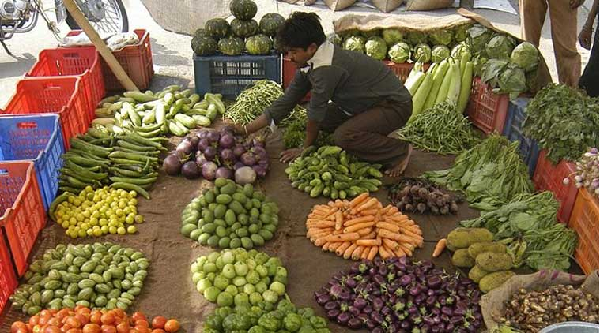
India’s January wholesale inflation eases to 2.76%
 New Delhi : India’s annual rate of inflation based on wholesale prices eased to 2.76 per cent in January 2019 from 3.02 per cent reported for the corresponding month of 2018.
New Delhi : India’s annual rate of inflation based on wholesale prices eased to 2.76 per cent in January 2019 from 3.02 per cent reported for the corresponding month of 2018.
—IANS

 New Delhi : India’s annual rate of inflation based on wholesale prices eased to 2.76 per cent in January 2019 from 3.02 per cent reported for the corresponding month of 2018.
New Delhi : India’s annual rate of inflation based on wholesale prices eased to 2.76 per cent in January 2019 from 3.02 per cent reported for the corresponding month of 2018.
—IANS
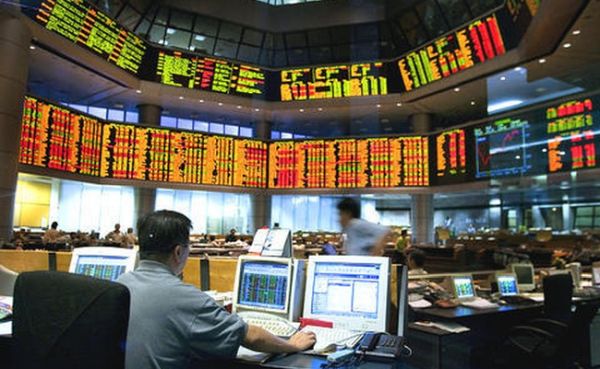
 Mumbai : Key equity indices rose on Monday, wiping off initial losses, as wholesale inflation grew at a slower pace and amid bets of robust corporate earnings in the second quarter ended September 30.
Mumbai : Key equity indices rose on Monday, wiping off initial losses, as wholesale inflation grew at a slower pace and amid bets of robust corporate earnings in the second quarter ended September 30.
However, a slight rise in global crude oil prices pressured the Indian rupee, capping the gains.
Healthy buying was witnessed in information technology and healthcare counters, market participants said.
“Market traded in a rangebound manner, ending on a positive note. However, concerns about global growth due to trade war (between the US and China) and rising cost of funds are weighing on the market,” said Vinod Nair, Head of Research, Geojit Financial Services.
The benchmark S&P BSE Sensex settled at 34,865.10 points, up 131.52 points or 0.38 per cent. The NSE Nifty closed at 10,512.50, up 40 points or 0.38 per cent. The Sensex touched an intra-day high of 35,008.65 and a low of 34,559.98.
India’s annual rate of inflation based on wholesale prices accelerated 5.13 per cent on year in September from a 4.53 per cent increase in August, official data showed here on Monday.
“The rupee continued to be under pressure, as oil prices resumed an uptrend due to tension between the US and Saudi Arabia. Second-quarter results began on a positive note,” said V.K. Sharma, Head, PCG and Capital Markets Strategy, HDFC Securities.
Astha Jain, Senior Analyst, Hem Securities, told IANS: “Today’s rise can be attributed to healthy buying after the major correction last week.”
On Monday, the Indian rupee closed at 73.83, sliding 27 paise from its previous close of 73.56 per US dollar.
Provisional data with the exchanges showed that foreign institutional investors sold stocks worth Rs 67.86 crore, whereas domestic institutional investors bought Rs 294.78 crore worth of stocks.
The top gainers in Sensex were Infosys, up 2.95 per cent at Rs 699.10; ITC, up 2.51 per cent at Rs 281.60; ONGC, up 1.78 per cent at Rs 160; TCS, up 1.60 per cent at Rs 1,949.15.
Major losers included Hindustan Uniliver, down 2.68 per cent at Rs 1,526.60; Mahindra and Mahindra, down 2.63 per cent at Rs 748.60; ICICI Bank, down 1.76 per cent at Rs 313.20; Vedanta, down 1.52 per cent at Rs 210.95; and Axis Bank, down 1.51 per cent at Rs 575.85 per share.
—IANS

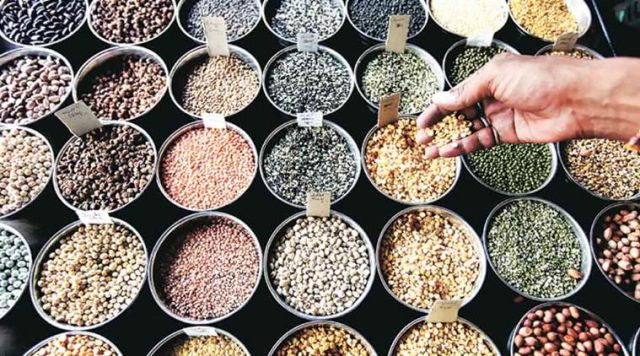 New Delhi : Base effect along with a fall in cost of food and primary articles eased India’s annual inflation rate based on wholesale prices to 4.53 per cent in August from a 5.09 per cent rise in July.
New Delhi : Base effect along with a fall in cost of food and primary articles eased India’s annual inflation rate based on wholesale prices to 4.53 per cent in August from a 5.09 per cent rise in July.
However, on a year-on-year (YoY) basis, the Wholesale Price Index (WPI) furnished by the Ministry of Commerce and Industry on Friday was still higher than 3.24 per cent reported for the corresponding period of 2017.
“Build up inflation rate in the financial year so far was 3.18 per cent compared to a build up rate of 1.41 per cent in the corresponding period of the previous year,” the Ministry statement said here.
On a sequential basis, the expenses on primary articles, which constitute 22.62 per cent of the WPI’s total weightage, slipped by (-) 0.15 per cent, from an increase of 1.73 per cent in July.
Similarly, the prices of food articles dipped. The category has a weightage of 15.26 per cent in the WPI index. It deflated by (-) 4.04 per cent from a rise of (-) 2.16 per cent.
Interestingly, the cost of fuel and power category, which commands a 13.15 per cent weightage, increased at a slower pace of 17.73 per cent from a growth of 18.10 per cent.
However, expenses on manufactured products registered a rise of 4.43 per cent from 4.26 per cent.
On a year-on-year (YoY) basis, onion prices decined by (-) 26.80 per cent whereas potatoes became dearer by 71.89 per cent.
In contrast, the overall vegetable prices in August declined by (-)20.18 per cent, against a rise of 44.84 per cent in the same month a year ago.
Further, the data revealed that wheat became dearer by 8.39 per cent on a YoY basis while prices of pulses came down by (-) 14.26 per cent, though paddy became expensive by 4.78 per cent.
The prices of protein-based food items such as eggs, meat and fish went up marginally by 0.59 per cent.
Fuel-wise, the price of high-speed diesel rose by 19.90 per cent on a YoY basis, petrol by 16.30 per cent and LPG by 46.80 per cent.
On Wednesday, data furnished by the Central Statistics Office (CSO) showed that a decline in food prices had eased India’s August retail inflation to 3.69 per cent from 4.17 per cent in July.
“The decline in the WPI inflation in August 2018 was largely in line with forecasts, driven primarily by the deepening disinflation in food items, particularly perishables like vegetables and fruits, as well as some easing in the inflation for primary non food articles, minerals and fuels,” said Aditi Nayar, Principal Economist, ICRA.
“However, core inflation hardened to a series high 5 per cent in August 2018 from 4.8 per cent in July 2018, a signal that firms with pricing power are beginning to transmit the weaker rupee and rising costs associated with industrial inputs such as fuels, to final prices.”
According to Devendra Kumar Pant, Chief Economist, India Ratings and Research: “Despite high inflation in crude petroleum, and fuel and power inflation, strong base effect, continued deflation in food articles resulted in sequential decline in WPI inflation.”
“The core inflation in August 2018 at 5 per cent suggests strong demand conditions in the economy. August 2018 core inflation is highest in 2011-12 base series. Apart from strong demand conditions, weak currency is also playing its role.”
—IANS
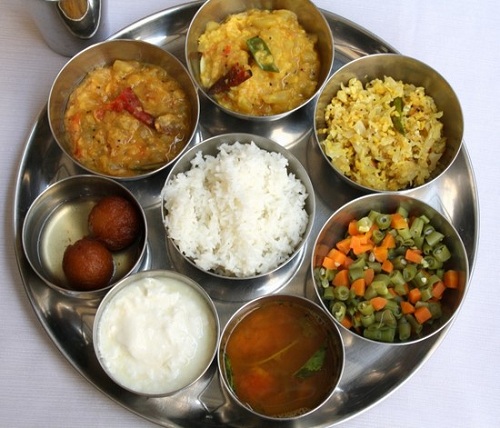
 New Delhi : A major spurt in food and fuel prices in the country pushed the wholesale price index (WPI) for May to 4.43 percent, to nearly double over the 2.26 percent registered in May last year and higher than the 3.18 percent recorded in April, 2018, Commerce Ministry data showed on Thursday.
New Delhi : A major spurt in food and fuel prices in the country pushed the wholesale price index (WPI) for May to 4.43 percent, to nearly double over the 2.26 percent registered in May last year and higher than the 3.18 percent recorded in April, 2018, Commerce Ministry data showed on Thursday.
Earlier this week, Central Statistics Office data showed that the consumer price index (CPI), or retail inflation, in May had touched 4.87 percent.
Citing risks to inflation mainly from rising global crude prices, the Reserve Bank of India (RBI) last week raised its key lending rate by 25 basis points to 6.25 percent for the first time in over four years. The RBI has a median retail inflation target rate of 4 per cent.
The WPI Food Index, consisting of ‘Food Articles’ from Pri’ary Articles group and ‘Food Prod‘ct’ from Man’factured Products group, increased from 0.67 per cent in April 2018, to 1.12 per cent last month.
Expenses during the month under consideration on primary articles, which constitute 22.62 per cent of the WPI’s total weightage, rose by 3.16 per cent, from a fall of
(-)1.71 per cent in May 2017.
Among primary articles, food, which has a weightage of 15.26 per cent in the index, edged up last month by 1.60 per cent from a deceleration of (-)2.13 per cent reported for the same month last year.
The cost of fuel and power, which commands a 13.15 per cent weightage in the index, increased at a fast pace of 11.22 per cent during the month in review, from a growth of 7.85 per cent in April 2018.
Reacting to the WPI numbers, industry body Assocham urged policymakers to keep a check on petrol and diesel prices as these could “significantly impact import bills which may subsequently have an effect on exchange rates.”
“Besides, it might also negatively impact input prices for the industry which has already started feeling the pressure on its profitability,” Assocham Secretary General D.S. Rawat said in a statement.
“Rising crude prices would not only affect headline inflation but would also put pressure on price levels as the twin deficit goes up, thereby impacting government’s plan to’increase rural spending and minimum support price for farmers ahead of general elections next year as it would exacerbate price pressures, and is likely to blow out the fiscal deficit target,” he added.
—IANS
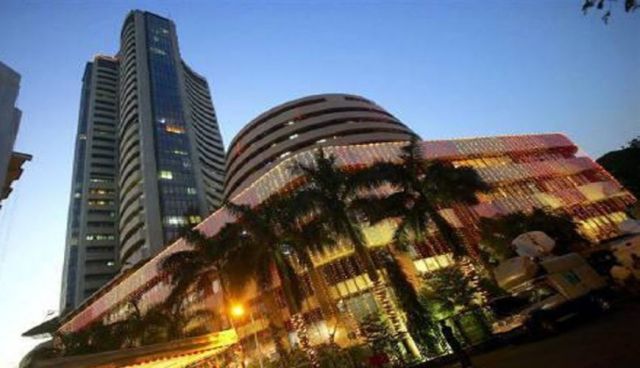
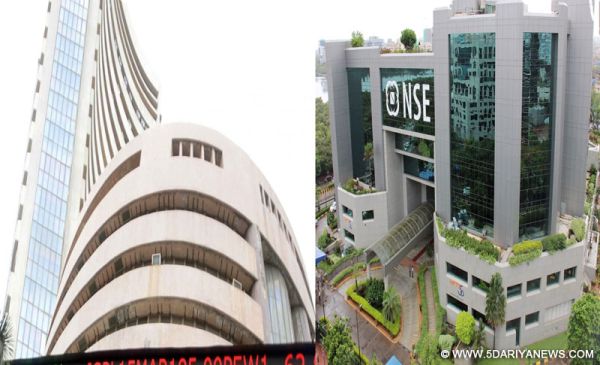 Mumbai : Higher inflation data and caution ahead of Karnataka election results kept the key Indian equity markets subdued on Monday afternoon.
Mumbai : Higher inflation data and caution ahead of Karnataka election results kept the key Indian equity markets subdued on Monday afternoon.
India’s wholesale inflation rate rose to 3.18 per cent in April from 2.47 per cent in the previous month, official data showed here on Monday.
According to market observers, heavy selling was witnessed in consumer durables, auto and capital goods stocks.
At 1.56 p.m., the wider 50-scrip Nifty of the National Stock Exchange (NSE) was trading at 10,781.85 points — down 24.65 points or 0.23 per cent from the previous close of 10,806.50 points.
The Sensex of the BSE, which opened at 35,555.83 points, was trading at 35,490.26 points (1.56 p.m.), lower by 45.53 points or 0.13 per cent from the previous day’s close at 35,535.79 points.
The Sensex touched a high of 35,642.72 points and a low of 35,456.56 points in the trade so far.
The BSE market breadth was bearish with 1,752 declines and 790 advances.
So far, the major gainers on the BSE were Dr Reddy’s Lab, NTPC, Sun Pharma, Tata Steel and State Bank of India, while Tata Motors (DVR), Tata Motors, Mahindra and Mahindra, ICICI Bank and Yes Bank were the major losers.
On the NSE, the top gainers were NTPC, Dr Reddy’s Lab and State Bank of India. The major losers were Titan, Zee Entertainment and Indusbulls Housing Finance.
—IANS